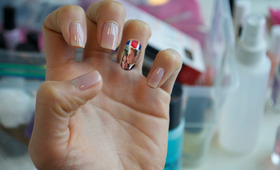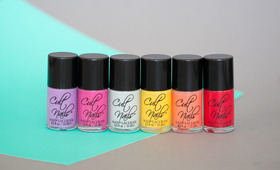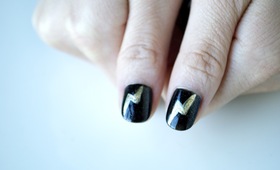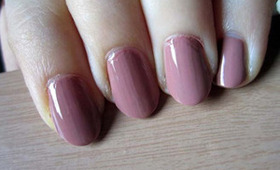Discover the Color-Changing Effects of Thermal Nail Polish
Published Apr 23, 2021
Although I haven’t visited a nail salon in over a year (!!), I’ve managed to experiment with more polish shades, designs, and formulas during lockdown than I could have ever imagined in my pre-pandemic life. This month alone, I’ve sported colored tips, ombré patterns, duochrome color, and more—all by wearing just two coats of one single polish.
The name’s thermal nail polish, and color changing is its game. Similar to mood rings, thermal polish transitions between shades based on body temperature, environment, and activity.

Curious about the science behind this ~magical~ phenomenon, I spoke with Cirque Colors founder Annie Pham about the brand’s thermal polish offerings to uncover how the formula works.
“Thermal nail polishes contain special temperature-sensitive pigments, called leuco dyes,” says Pham. “These dyes consist of microspheres, which encapsulate chemicals that undergo reversible reactions in the form of color changes as the temperature increases or decreases.”
Cirque Colors formulates each thermal polish with a combination of leuco dyes and regular pigments to achieve a variety of hues. Each polish features two main colors that darken, lighten, and switch depending on internal and external temperature.

For example, the polish shade Luna (pictured) features violet and turquoise shades. When exposed to warmth, the polish turns turquoise. When cold, the shade transforms into violet.
In addition to transitions between these two solid colors, wearers will also see a decorative combination of these two shades reflected on their nails at the same time.
Nail length plays a key role in color distribution, yielding a variety of unexpected patterns that shift each time you look at your fingertips. One of my favorite effects is the colored tip design, where one color is perfectly concentrated on the tips of the fingernails and the other shade fills in the nail beds.

For Luna, the turquoise shade is concentrated on the beds (which is the warmer part of your nails) and the violet color envelopes the tips.
“You can easily achieve that effect if you have longer nails since the tips are further away from your body,” explains Pham. “Alternatively, activities such as handwashing or holding a hot or cold beverage can create the two-color effect regardless of nail length.”
I also love the shimmery, duochrome color best seen when sunlight shines directly on nails painted with Luna. The resulting hue is iridescent light purple with a teal reflect.

Another mesmerizing design occurs when colorful tips transition into an ombré design, where the shade at the fingertips seamlessly blends toward the shade at the nail beds. The merging colors of Luna, coupled with the formula’s sparkly flecks, make for perfect galaxy-inspired nails.
While the designs described above are some of the main effects I’ve seen, the possibilities are ever-changing and endless—ranging from mismatched fingers to uniform looks across all nails.
If you’re ready to dip into thermal polish, apply the formula the same way you would your regular polish.
“First start with a base coat, then apply two to three coats of polish and finish with a top coat,” Pham recommends. “Generally, the base and top coat layers are thin enough where it doesn’t impact the color-changing properties.”
Check out the latest Thermal Nail Polish from Cirque Colors for scorching looks to wear during the coming sunny months.
Featured Products
You Might Also Like
-

Nail Effects
Royal Wedding Minx Nails
- 9
-

From the Shop
How Cult Nails Developed a Cult Following!
- 395
-

Nails
Harry Potter Nail Inspiration
- 119
-

Stories
COVID-19: Jouer Cosmetics Creates a New Product to Help Frontline Warriors
- 1
-

From the Shop
Is This The Perfect Makeup Brush Set? Wayne Goss Thinks So!
- 275
-

Nail Effects
Work Manicure Inspiration
- 75












